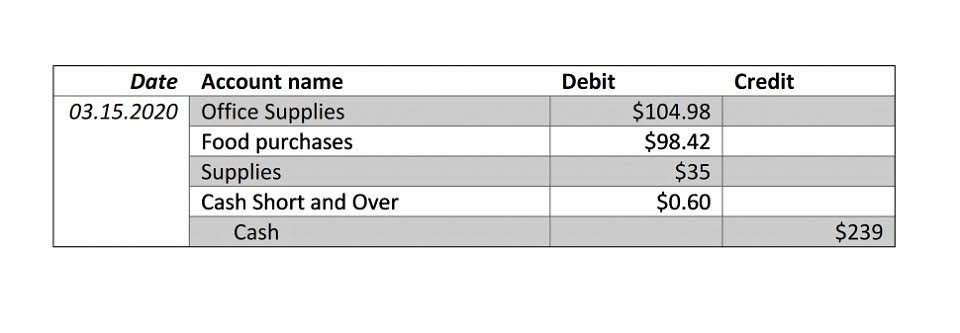
The processing time for an EFT payment can vary depending on the type of transaction and the financial institution involved. Some EFT payments, like direct deposit, may be processed and available on the same day, while others may take several days to clear. ACH payments sometimes have reversal windows (e.g., for errors or unauthorized debits), but it’s not always guaranteed and has time limits.
Types of EFT Payments
In most cases, the Automated Clearing House channels the transaction through the Federal Reserve system before the money up in the receiver’s account. Once an electronic funds transfer is initiated, it what are retained earnings authorizes a bank or credit union to either debit or credit a consumer’s account for a specified amount of money. A wire transfer offers an efficient and quick means to send money for large and high-value payments.

Types of Electronic Funds Transfer

Most EFTs are completed within a couple of days, with some types clearing on the same day. Even though you may be physically handling cash, all transactions made at an ATM are considered electronic fund transfers. Once you enter your PIN, the card issuer’s network will verify your information and process the transaction. Using an ATM lets you save time over having a bank teller manually process your transactions and is typically free of charge if you use an in-network ATM.
EFT vs. Wire Transfer in Canada
They’re crucial for meeting current legal standards and making money movement smoother. EFTs play a huge part in the ongoing story of financial innovation. For example, using HIPAA transactions through EFT can save the healthcare industry a lot of money.
- Electronic funds transfers might not be the quickest method available, but in most cases, they are your last and only resort.
- You don’t want to accidentally send money to someone with a similar name by mistake as you may not get that money back.
- They can be sent domestically or internationally, and are processed immediately once they’re initiated.
- EFT payments made through the Automated Clearing House (ACH) network are considered secure as it is a highly regulated network with strict rules and procedures to protect against fraud.
- It can include any purchase made online via a company’s website.
So, in an ACH transaction, the request will stop through the ACH between the initiation and the bank itself. That means ACH transactions add an extra day or two, but if speed is less important than security, this option is desirable. Looking into understanding EFT, it’s important to see it as more than banking. It stands for “electronic fund transfer” and shows us how the digital world changes money handling. This term was defined back in 1978 by the United States’ Electronic Fund Transfer Act.
Wire transfers are useful for transactions involving large amounts of money. The processing times for EFT payments depend on the type of payment that is actually in question. Usually, it can take anywhere from one to four days for an EFT payment to clear.

The convenience of anytime, anywhere transactions
EFT payments can revolutionize the way you do business, making transactions quicker, safer, and more convenient. It’s no wonder why more and more businesses are jumping on the EFT bandwagon. The bank then investigates the dispute, typically within 10 business days of being notified. How long it takes to resolve it can depend on factors like how long the account has been open. EFTs offer consumers security under the EFTA—if they notify their bank in a timely manner. Financial institutions must adopt the practices outlined in the EFTA and have error resolution procedures in place for unauthorized transfers.

The future of digital banking will significantly shape the evolution of EFT (Electronic Funds Transfer). Real-time payment systems are becoming more common, enabling instant transfers 24/7. Blockchain technology may also revolutionize EFT by offering decentralized and tamper-proof transfer mechanisms. Artificial intelligence is being used to predict fraud, automate compliance, and personalize user experiences.
- There are others too, like Debit Card Transactions, Electronic Benefits Transfer (EBT), and Online Bill Pay, which allow you to send funds digitally to businesses or individuals.
- An ACH credit refers to the process of electronically depositing, or “pushing,” funds into a bank account using ACH.
- Canceling an EFT may be difficult or even impossible depending on whether it has been processed, so it’s crucial to double-check payment details before sending an EFT.
- But now, with smartphones, you can easily transfer money over a call.
- They use secure networks, like the Automated Clearing House (ACH) network or the Federal Reserve’s Fedwire system, to communicate and move the funds safely.
Your state might also have additional regulations, so be sure to check your state laws. EFT payments are usually super easy to make — and require little effort to receive. The ATM terminal will initiate the transfer from your account, and what eft means inform your bank you’ve taken the cash.
EFT payments are a speedier alternative to physical payment methods like cash and checks. Direct deposit, credit card transactions, ATM transactions, electronic checks and phone payments are all types of EFT payments. Both debit and credit card transactions are processed through payment networks like Visa and Mastercard, which provide security measures, including encryption and fraud monitoring. Transaction fees for merchants vary, but many find the ease of accepting card payments worth the cost. If you’re a business owner, you’ve likely heard of EFT payments. Simply put, EFT (Electronic Funds Transfer) is a http://www.picmw.com/index.php/california-ca-sales-tax-rates-by-city/ system that allows money to be transferred electronically from one bank account to another.
